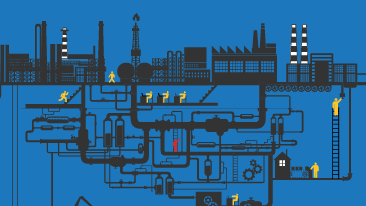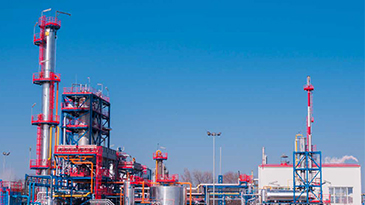According to the book Industrial Megaprojects by Ed Merrow, founder and president of Independent Project Analysis (IPA), as many as 65% of major capital projects fail to meet business objectives, which can include cost, schedule, production and economics. Changes in scope and execution strategies in the later project phases contribute significantly to these overruns.
AspenTech’s concurrent conceptual engineering approach enables design engineers to evaluate many options in the conceptual phase and digitally provide the optimal alternatives to the estimators who can then quickly develop complete Total Installed Cost (TIC) estimates. One consistent economic model is used throughout the project’s lifecycle, starting with design and estimating.
Volumetric models with significant engineering embedded in the system provide bulk material quantities and the workhours to both design and construct the project, thus enabling a complete high-quality estimate with minimal engineering input. This efficient work process also allows estimators to digitally reuse engineering and cost data from previous estimates and projects in addition to using that data for benchmarking.
Having optioneering and high-quality estimates early on allows companies to determine the scope and execution strategy in the initial capital project phase and save money and time down the road. When performing a risk analysis early on, the team can identify, rank and quantify risks so the company may address them. An EPC can quickly decide whether to pursue a particular bid. If not, the firm saves all the overhead costs involved in preparing such a bid and can focus their efforts elsewhere.
By being selective and efficient with their bidding, EPCs can improve their win rates and help their bottom lines. EPCs operate on thin margins and one large project gone bad can harm the entire company.
ExxonMobil presented an example of an impactful early decision at AspenTech’s OPTIMIZE 2017 conference. They used Aspen Capital Cost Estimator to help optimize modular versus stick-built construction and chose modular construction early for one of their remote area major capital projects, thus saving cost and starting production nearly a year earlier than if they had chosen stick-built construction.
A global energy company was able to evaluate two distinct execution options for one of their plants early in the capital project timeline, without going out for bids and by doing only minimal engineering. They discovered, to their surprise, that the option of two small polymer trains was actually more cost effective that the one large train, despite their initial assumptions that buying and installing more pieces of equipment would be more expensive.
SK E&C knew they needed to counter global threats to their business with technology that would enhance efficiency and develop bids that were more accurate and provided flexibility to the business process when changing scope. They were able to provide one of their clients with an optimal estimate using Aspen Capital Cost Estimator after reviewing several alternatives, all while improving estimate accuracy and reducing their typical engineering and estimating hours by 50%.
The Dow/Aramco Sadara Chemical plant team also identified a major issue and addressed it early in the process through performance engineering. Through early optimization of the design and estimate the team was able to identify many opportunities for improvement early in the project, accelerating collaboration between the EPCs and owner.
Good decisions made early with the help of AspenTech’s performance engineering solutions have a profound positive effect on both a project’s cost and schedule and have a direct impact on a company’s bottom line.
Learn more in the white paper "Optimize Asset Design and Operations with Performance Engineering."






Leave A Comment